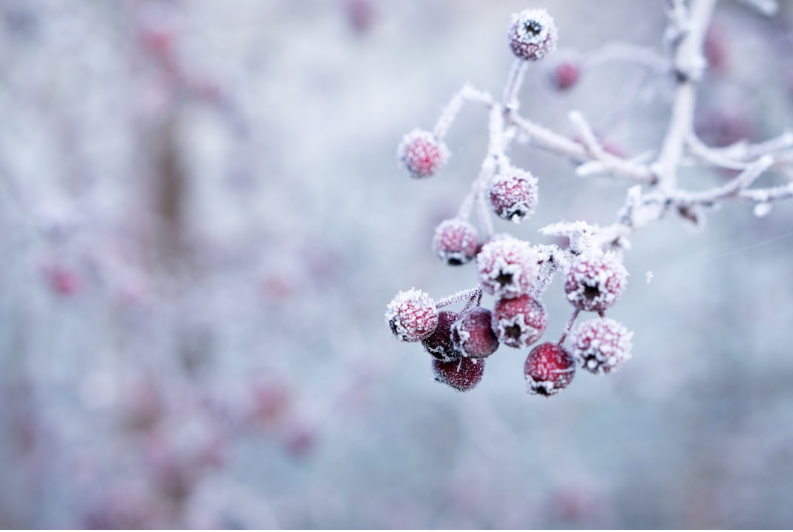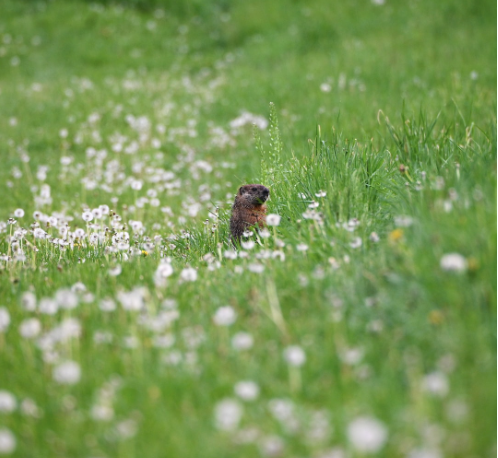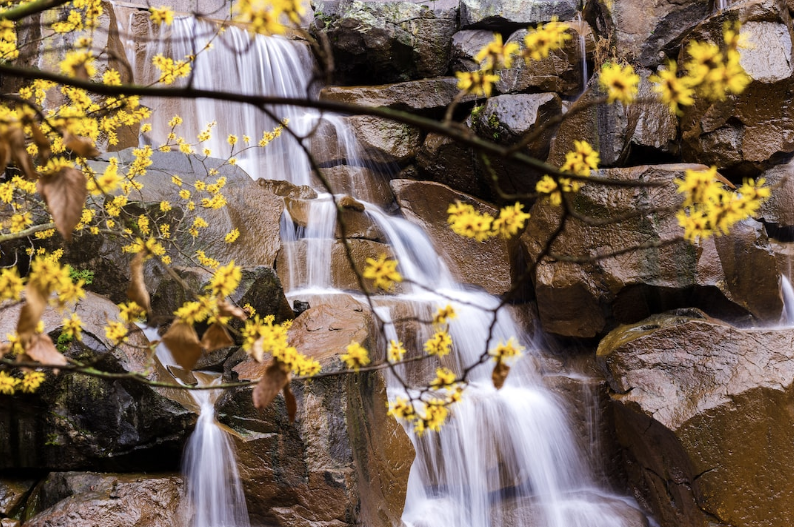
Imbolg - Celebrating Winter
February 1
Imbolg & Winter Celebrations
How the World Celebrates | Deities | Associations | Food | Activities & Rituals | Tarot Spread | Meditations
Themes from the Earth
This moment in the year asks us to look ahead and choose what to bring into our lives, preparing to fill the space from what we shed during the winter solstice.
Earth Cycle and Workings
February 1st (or 2nd) is the winter cross-quarter holiday, and the first of four Celtic “Fire Festivals” marking the change of seasons. It is the mid-point between the winter solstice and spring equinox. This time is often seen as a celebration of the winter season. The common name for this holiday among many pagans is Imbolg (from Celtic traditions).
This point is sometimes known as “the Quickening” a comparison to the point in pregnancy when you first feel movement and confirmation of the coming of new life. The earth is cold and at rest now but the first signs of spring are just starting to form. Small flowers and onions are shooting up reminding us of the possibility of new life after the death of winter. It’s time to start making the mental and organizational plans for your year, getting ready to plant seeds in both your garden and life.
First Signs of Spring
In many Asian and European countries winter solstice is considered mid-winter, and spring begins at the beginning of February. Here in the US, our seasons are a little later, with winter solstice being the start of our winter, and it ending around the spring equinox. Despite this, even here in Ohio we still see many of the same signs like the very first flowers and plants popping up their heads through the snow.
How the World Celebrates
Imbolg and Celtic Celebrations
Imbolg (pronounced Im-bowlg) is a Gaelic festival marking the beginning of spring. The name, Imbolg, means “in the belly”. The belly may be the dark of the winter, the timing of it taking place during lambing season, or maybe it speaks to the quickening of mother earth, when the first movements of growth begin again. There is evidence that versions of this celebration have been held for at least 2,000 years in Ireland and Scotland. Sometimes it was known by the names Imbolc, Oimelc (meaning “ewe’s milk”), or Brigid’s Day. The festival marked the beginning of spring and nearing the end of the cold winter.
Brigid
Celebrations often focused around Brigid, goddess of hearth and home, of inspiration, creativity, blacksmithing, justice, and fire. Made out of reeds and grasses, Brigid’s crosses were created to hang over doorways for protection, and dolls were made by girls and sometimes given to the villagers. Items of clothing (like a scarf) were hung outside overnight with some food and drink in the hopes Brigid would bless it as she passes by, granting good health and protection.
Candlemas & the Catholic Diaspora
Candlemas
Candlemas is a Christian holiday that dates back to around 350 CE and spread to the Catholic diaspora. It is the point in the liturgical year when Mary is purified after childbirth and Jesus is presented to the temple. Catholics around the world celebrate this in many ways, often imbuing elements of their pre-Christian beliefs into the new traditions. After Candlemas will come the holiday Carnival (also known as Mardi Gras, or Fat Tuesday) giving a period of celebration before Lent, the season of purification.
St. Brigid’s Day - Ireland
With the arrival of Christianity in the 7th century there was an attempt to bring the Brigid’s Day/Imbolg traditions in line with the church. Brigid’s Day was turned into St. Brigid’s Day, modeled after Brigid of Kildare who a supposed Catholic nun and healer born in the 5th century. To bring Brigid into the Christian mythos and connect to this time of Candlemas celebrations, they made her Mary’s midwife, who helped her give birth, and then present Jesus to the temple on this day. She is now the Patron Saint of Ireland and bares a striking resemblance to the goddess Brigid. St. Brigid is associated with fire and blacksmiths, dairy and livestock workers.
Gŵyl Fair - Wales
Gŵyl Fair was a Catholic, pre-reformation Welsh tradition known as Mary’s Festival of the Candles. It started in 11th century, has its roots in Imbolg, and marks the coming of spring. They celebrated with a tradition of sitting between two candles and flipping a cup behind your head to determine long life.
Dia de la Candelaria - Mexico
Dia de la Candelaria is a Mexican-Catholic holiday that combines Catholic traditions with indigenous ones that date back to the Aztecs. On Three King’s Day (January 6th) the person who finds the baby in the cake is put in charge of making the tamales for the family on Candelaria. This food and tradition has its roots in Aztec celebrations. Many people celebrate by buying a Jesus doll, and dressing it up to present to the church. Dia de la Candelaria is not widely celebrated anymore but still has regional popularity
La Chandeleur - France
In France, Candlemas is celebrated as La Chandeleur. This time marks the beginning of spring and is also known as Crepe Day - which they make and eat to resemble the sun and remind of its coming warmth. Rain on la Chandeleur means 40 more days of winter. They celebrate with a tradition of flipping a crepe with one hand while holding a coin in the other, a successful flip brings prosperity. Supposedly Napoleon’s army experienced a massive defeat after he flipped a crepe and it landed on the floor.
The Virgin of Candelaria - Canary Islands
Around 1400 CE, the Spanish colonized the Canary Islands, off the western coast of Africa. The Guanche peoples there worshiped a sun goddess, Chaxiraxi who was merged into the worship of Mary, the mother of Jesus, and was celebrated on Candelaria. This interpretation of Mary became very popular in Spanish Catholicism and is celebrated as the Virgin of Candelaria.
Worldwide Celebrations
Imbolg and Candlemas are not the only celebrations at this time. In many parts of the world, far apart from each other, people have celebrated common themes, each in their own way and with their own traditions and meaning. Some are ancient and forgotten, others are very much alive and practiced.
In these we see the hope of spring and light returning, of purification and cleansing things out of our lives, of fertility and growth, and predictions for the rest of winter.
Februalia and Lupercalia – Roman
This time marked the start of month-long period of atonement and purification. It likely began with the ancient Sabines and continued with the Romans. It starts as Februalia but eventually Lupercalia was added, which celebrated not only purification, but health and fertility as well. During Februalia sacrifices were made to Februus, the god of purification, Juno, goddess of women, marriage, & childbirth, and Vesta, goddess of hearth & home.
It’s interesting to see the strong ties between this month of Roman purification moving then into celebration of fertility and see those themes in Catholic tradition with Candlemas, Mary’s purification, right at the start of February, and soon to be followed by exuberant festivals like Carnival and Mardi Gras just before Lent comes, a longer period of purification.
Feast of Lupercalia – Andrea Camassei, 1635
Powamu Festival – Hopi Peoples (in modern-day Arizona)
The Powamu or “Bean Planting Festival” is an 8-day period spanning the end of January through beginning of February. It celebrates the return of Kachinas- ancestral spirits who bring rain and fertility to crops, announcing the start of spring. During this time, the Hopi people plant beans in a Kiva (a ceremonial room made to be very warm like a steam room), they sprout quickly because of the humidity. Their growth is a sign of fertility and encourages the Kachinas to bring rain.
Groundhog’s Day – US and Canada (brought from Germany)
Groundhog’s Day was first recorded in Pennsylvania in 1840, and was brought from the traditions of German immigrants. Every year people gather to see if the groundhog, Punxsutawney Phil, will pop out of his hole and see his shadow indicating 6 more weeks of winter, if he doesn’t there will be an early spring. In Germany this was known as Badger Day, where they used a badger to predict the remainder of winter and passed on the saying:
For as the sun shines on Candlemas Day, so far will the snow swirl in May
Setsubun “Seasonal Division” – Japan
In Japan they celebrate Setsubun or “Seasonal Division”, the final day before spring. People prepare Mamemaki, roasted soybeans, which they throw at temples, homes, or people in demon masks in attempts to drive away evil spirits shouting “Devils out, Fortune in!” Setsubun has its roots in Tsuina a Chinese celebration introduced to Japan in the 8th century.
Lichun and Chinese New Year – China
Lichun “Start of Spring” marks the start of spring and the last day of the solar year, it is celebrated in conjunction with Chinese New Year. First recorded in 207 BCE and still celebrated today, they often have lantern festivals, and erect a “spring ox” made of bamboo or paper. They eat lots of spring foods (like spring rolls) and practice egg balancing for good luck granting you good luck and money.
Deities
for Imbolg and the winter cross-quarter days
Deities are an important lens to understand culture through. They are physical representations of the forces and energies we see interacting in our world. They give human, relatable images for spiritual ideas and are often imbued with stories and traditions that tell the history and culture of a people. Deities give us something to interact with and enact energy upon. Depending on your background and culture, deity worship could include more solemn expressions like closed rites or could be as casual as putting up a picture of your hero to invoke their energy in your life.
Deities from the British Isles
Brigid – Celtic goddess of the eternal flame, spring, fertility, creativity, blacksmithing, and new birth
Cailleach - Celtic goddess of winter
Arianrhod – Welsh goddess of sky and moon, fertility, and childbirth
Danu – Celtic goddess of nature, fertility, and flowing springs
Deities from Christianity
Mary – mother of god, Jesus. Day of Mary’s Purification and Presentation of Jesus
Jesus – Day of Mary’s Purification and Presentation of Jesus
St. Brigid – Catholic patron saint of babies, midwives, dairymaids (supposedly was miraculously flown to be the midwife when Mary gave birth to Jesus)
Greek & Roman Deities
Juno/Hera (Roman/Greek) – goddess of women, marriage, and childbirth
Vesta/Hestia (Roman/Greek) – goddess of the hearth and home & family
Venus/Aphrodite (Roman/Greek) – goddess of love
Gaia (Greek) – goddess of earth, nature, fertility
Februus (Roman) – god of purification
Deities from the Americas
Kachinas (Hopi) – deified ancestral spirits called on to bring rain and fertility to crops
Deities from Africa
Renenutet (Egypt) – goddess of fertility and nature
Chaxiraxi (Guanche, Canary Islands) Sun Mother goddess
Deities from the Asia
Seven Gods of Fortune (Japan) – seven gods who together bring integrity, prosperity, kindness, dignity, popularity, longevity, and magnanimity
Zao Shen (China) – god of the kitchen, who protects hearth and family
Menshen (China) – door gods who protect homes and businesses from evil spirit
Associations
for Imbolg and the winter cross-quarter days
Through the passing of time and traditions we begin to associate different colors, foods, and other symbols with particular holidays. The meaning of different colors, animals, or plants come from what we observe about each thing and how we have interacted with it over generations. These associations have been built through time in our food, customs & the stories we tell our children, they give us physical methods to carry on tradition.
Colors
Red – fire, the rising sun, blood of coming life
White – snow, maidenhood, purity and purification, milk & nourishment
Green – new life and growth
Black – darkness of winter
Yellow – the coming light
Flowers
Snowdrops –associated with purity, snow and milk
Crocus – new beginnings, intuition, lifting spirits in the heart of winter
Daffodils – new life, love, youthfulness, light and warmth
Violets – love, granting wishes, protection
Iris – hope, duality between winter and spring
Angelica – it is believed if you scatter angelica it will purify the area
Coltsfoot – sun and warmth, love, inducing visions
Dandelion – associated with sun, resilience, and Brigid
Animals
Sheep, lambs, cows and other animals preparing for birth at this time
Groundhogs, badgers and other animals who burrow and hibernate
Oxen - are celebrated during Lichun in China for their tenacity and willingness to keep going
Serpents and Bees – traditionally associated with Brigid
Gems and Stones
Amethyst – helps maintain strength and accept change
Bloodstone – associated with fire, healing, and purification
Garnet – associated with fertility and returning to love
Onyx – brings healing and protection
Ruby – brings protection, love, and passion
Turquoise – gives clarity, creativity & self-expression
Celebrating the Season with Food
during Imbolg and winter cross-quarter days
Food nourishes our soul and carries meaning and history. I love that the significance and message of different foods often comes from what it does, how it makes us feel, and the ways it was used in our history. Every culture and home has their own food traditions for holidays and seasons. These are usually based on what is local and fresh around us, and what we grew up with. Food is an important way we bring meaning and history into our celebrations.
Herbs
Basil – new life, love, and abundance
Bay Laurel – purification and protection
Rosemary – fire, creativity, purification, and protection
Spring leeks, onions, and garlic – purifies and stimulates passion
Spring Vegetables & Fruits
Potatoes – nourishment, grounding, new life in darkness
Peas – love, friendship, & wisdom
Beans – prosperity, luck, divination, & healing
Oats – sacred to Brigid for emotional strength, & nourishment
Blackberries – sacred to Brigid for protection & prosperity magic
Dairy
Brigid’s connections with herding and dairying make all dairy products sacred to her. Try your hand at making some butter or cheese, or just enjoy these nourishing foods in her honor
Eggs – new life, fertility
Milk/Cream – abundance, complete nourishment
Butter – purity, abundance
Cheese (especially soft, fresh) – nourishment and fertility
Traditional Foods for Imbolg
Bread – there are two types of bread typical during Imbolg; round bread is representative of the sun, and braided bread represents the three aspects of Brigid – healing, fire, and creativity
Honey – connected to Brigid because of her relationship with bees, meaning is abundance and sweetness
Pancakes – shaped like the sun
Colcannon – traditional dish served for Imbolg starting around 16th c. Uses Imbolg favorites - potatoes, dairy, onion, and cabbage
Traditional Foods for Other Celebrations
Tamales - in Mexico and parts of South America, people celebrating Candelaria continue Aztec traditions making tamales for the holiday
Crepes - in France people celebrating la Chandeleur eat (and flip) crepes because their shape reminds of the coming sun
Beans - in both the Hopi and Japanese cultures beans play an important role in their holidays (the Powamu and Setsubun festivals)
Spring Rolls (China) - people in China celebrating Lichun, the start of spring, eat spring foods like spring rolls and pancakes
Imbolg Recipes
Here are some of the recipes that I’ve been making this season. We’ve been eating herbs from our garden (mostly preserved from the summer) and enjoying lots of potatoes, dairy, and bread. I hope you all enjoy them as well!
The Actions of Celebrating
Traditional Activities, Crafts & Rituals
Activities, crafts, and rituals are the ways we physically connect and carry on traditions from the past. It is through these physical manifestations that we learn to connect with our ancestors and the meaning of a holiday. Look for ways to acknowledge your history and traditions, while creating some of your own.
Brigid’s Cross
A Brigid’s Cross is a four-sided, square cross woven from rushes, straw or grasses, and tied at the four ends.
People would gather the rushes and weave them the night before Brigid’s Day. They would leave them out overnight to receive Brigid’s blessing, and then hang them in the house the next day to protect the house and drive away evil, fire, and hunger.
Some legends say she wove the cross as a witness to a dying pagan leader, but others say the symbol dates back to pre-christian practices connecting it to the solar cross.
Brigid Doll
Crafted out of straw or rushes, a doll is made as an effigy to Brigid. She was often dressed in white and decorated with other bits of nature like stones and shells.
The Brigid doll was paraded around to neighbors who would give food or coins to her, then she was placed in the heart of the home. (Groups of men called Biddy Boys still practice this in parts of Ireland).
“Here comes poor Brigid both deaf and blind,
Put your hand in your pocket and give her a coin.
If you haven’t a penny, a half penny will do.
If you haven’t a halfpenny god bless you”
Cloth Blessings
Tradition the night before Brigid’s Day is to leave an article of clothing, cloth, scarg, or ribbon out for her to bless.
It’s believed that leaving her blessing on the cloth grants good health to the owner throughout the year.
They say if you see footprints around or a smudge of ash on your cloth it is a sign that she’s been there!
Small Ways to Celebrate
Indoor Activities
Clean out your hearth and start a new fire
Purify your house with some early spring cleaning
Light a candle in your window
Set intentions
Work on garden plans and choose your seeds for the year
Outdoor Activities
Visit a source of running water and toss a coin in as an offering to Brigid
Look for animal tracks in the snow
Walk outside and see if you can spot the first flowers popping up
Crush or burn some angelica and spread it around the outside of your house to purify the area
Ritual - for the belly of winter
1. Bring in elements of this season
Incorporating meaningful things focuses our intention and reminds us of the lessons of this time. New flowers remind of the growth to come, many of the foods remind that we can always find nourishment in the darkest of times. You may want to incorporate an element from your ancestral culture. Look for meanings that support your intentions for the year.
2. Clean your hearth and light a fire
We want to start this year from a fresh place, not bringing any of the baggage of the past with us. Light your fireplace, firepit, burning pot, or a candle and while you do, remember what you’re letting go and why you’re making space.
3. Write the things you are welcoming into your life
On one side of a slip of paper write what you’re bringing in, on the other write the first step you need to take. Writing brings intention and energy to our thoughts and transforms them from an idea to a plan. If you want, feel free to write a copy of them to keep.
4. Burn the papers, speaking the intention & first step
Fold each slip and burn it in the fire, speaking each intention and first step as you do. Burning things helps us release them to the universe. Speaking them out loud brings focus and power and helps ingrain our intentions.
Imbolg Tarot Spread
In square formation like Brigid’s Cross
What in me do I need to let go?
What in me is ready to grow?
My first steps in planting seeds.
The things I need to nourish me.
Winter Meditations
The winter solstice in December was a time of releasing the things we no longer have room for in our lives. What did you release? Are you feeling a sense of loss from that, or a sense of expansiveness?
Are there other things you need to separate from or give up to make space for blessings and growth that are waiting to come in?
What are your hopes for the coming year? Imagine the people, plans, blessings, and expansion you plan to bring in.
What are your first steps? Start considering and even writing down the plans you are bringing in and what it will take to get where you want to be? The plan can always change but it starts with forward looking intention.
What support will you need to accomplish your plans – a friend to hold you accountable, a class to expand your education, a calendar to visually mark? We all need support and nourishment - find yours.



































